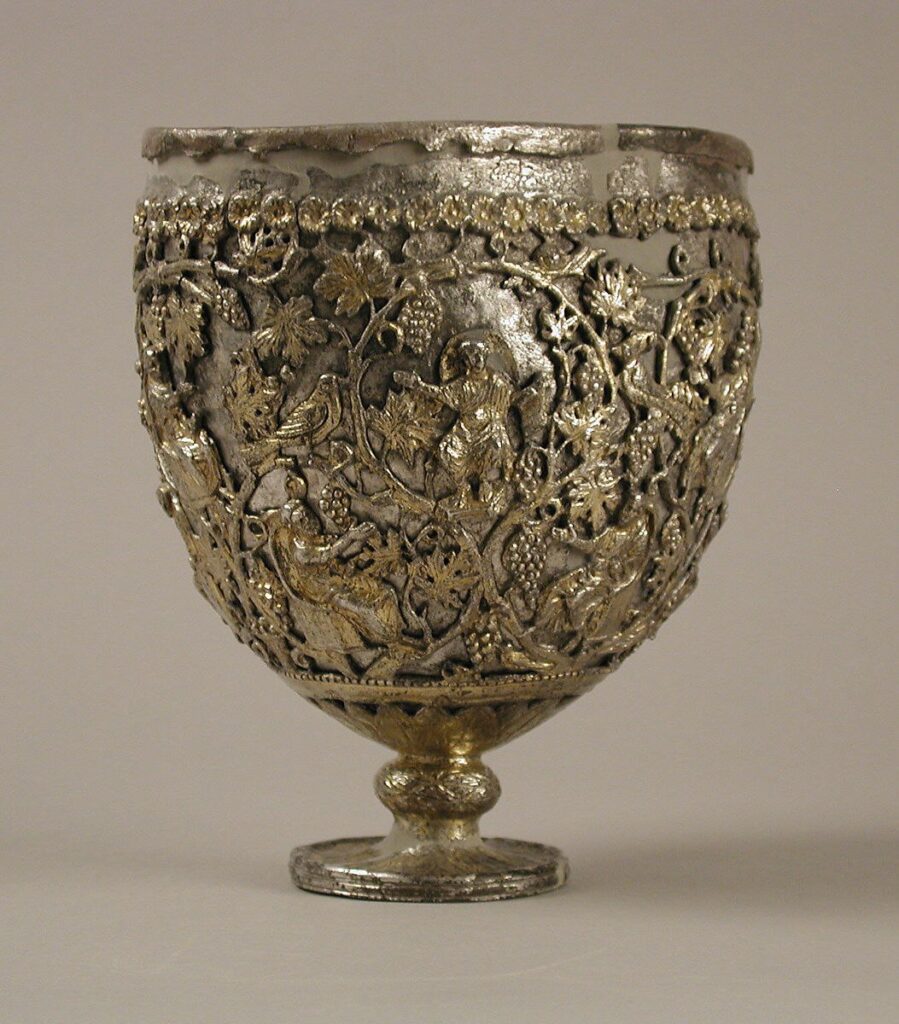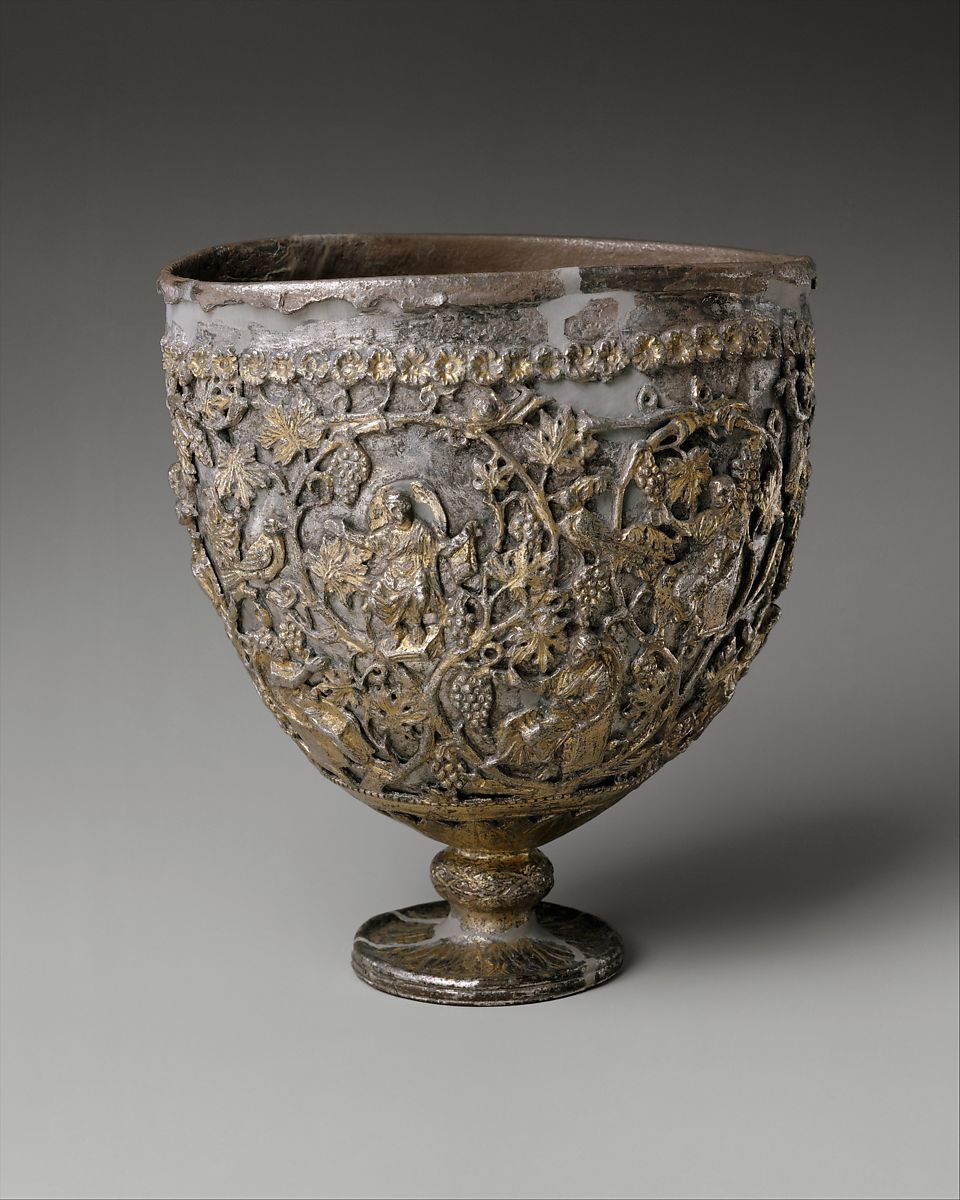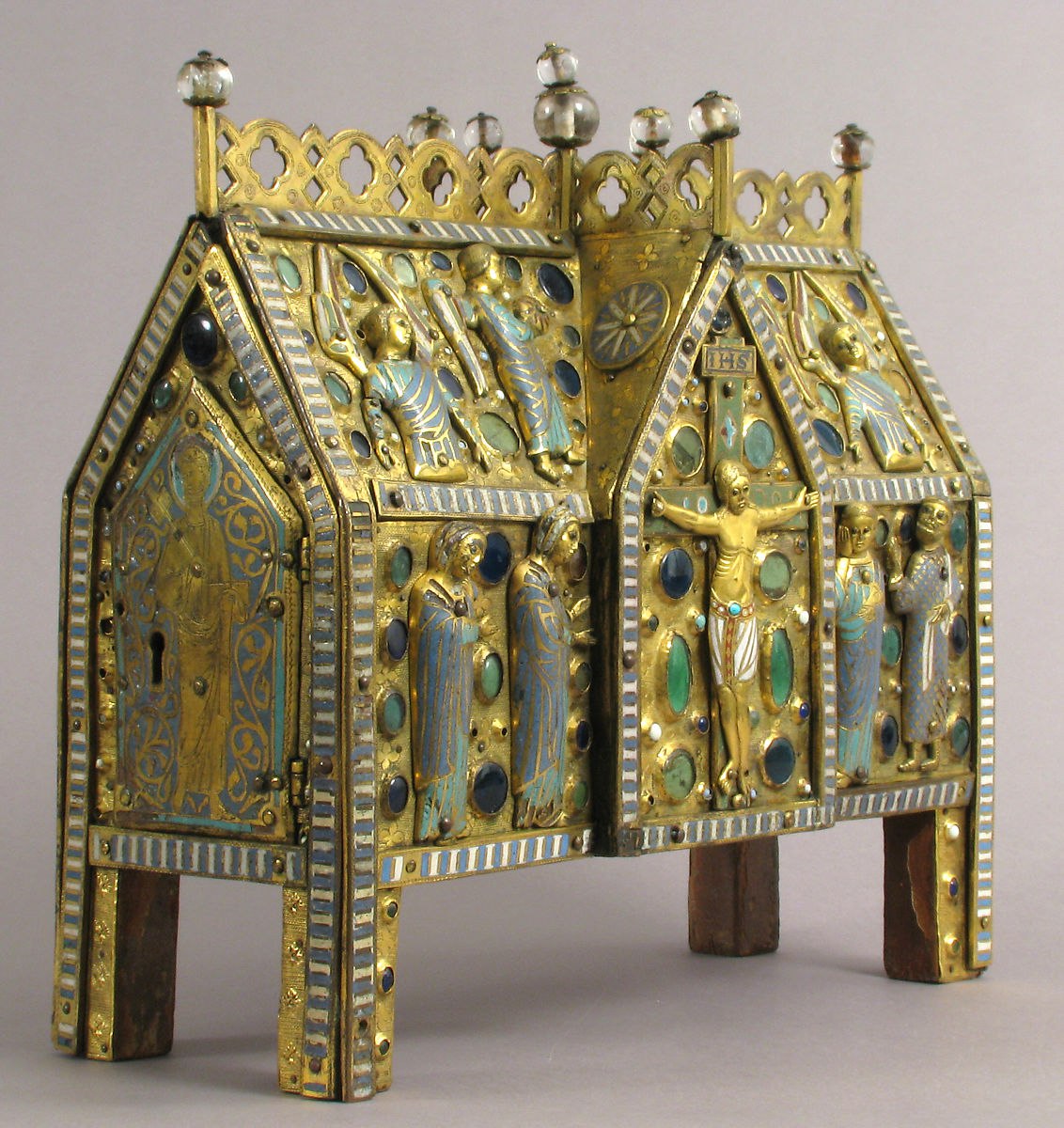
In the course of two years, beginning in 1908, four hoards of Byzantine silver objects were discovered in Syria. Among the Antioch treasure was a set of two bowls (21) set one inside the other. The inner bowl has an elongated shape; its edge is bent over the edge of the outer bowl, the surface of which is covered with figures of people and animals, as well as images of vines. The outer bowl has a wider base. The height of the bowl is more than 19 cm, and its outer diameter exceeds 18 cm. This silver bowl, found in the excavations of ancient Antioch, was a world sensation. It was quite clear that this double bowl had some special purpose. The owner of the treasure asked the Swedish scientist Gustav Eisen to examine it. Eisen examined the find in the most meticulous way: he divided the bowls and examined them separately, paying particular attention to their decoration. The inner bowl is strikingly different from the outer one: it is very simple and, unlike the outer bowl, it contains no decorations. Its characteristic elongated shape peculiar to the products of the turn of the I century BC – I century AD. The outer bowl is later and made by completely different master and using a different technique.
The scholar’s conclusion was unequivocal: the inner bowl is “a precious relic from the earliest years of Christianity,” the famous Grail cup! According to Eisen, later joined by a number of other scholars, it is the inner chalice that is the most sacred relic associated with the name of Christ. And if so, this find is of great value to all mankind!
It is fair to say that the bowl really attracted the attention of everyone, and the connection with it the legend of the Holy Grail greatly increased the value of the find. In 1950 the chalice was purchased by the Cloisters – Museum of Western Medieval Art in New York. However, even here it was not left without the attention of the public, as amazing things began to happen with the bowl.
The most remarkable story happened in 1963. On Easter Sunday, the museum’s security guard and night watchman during their morning rounds witnessed the bowl, standing on a shelf, suddenly… shuddered, and then suddenly rose to a height of about 7.5-8 cm!
The bowl floated in the air for several minutes. The guard rushed to the phone, and soon Thomas Hoving, the museum’s assistant curator, rushed to the museum. He examined the relic and offered this explanation for the mysterious incident: there was a plastic grid between the lamps hidden inside the pedestal base and inside the display case, which scattered the rays coming from these light sources. The alarm system was designed so that if a burglar wanted to remove the bowl from the display case from where it was standing, a special landmark would take upright and an alarm would sound in the main office. It so happened that it was at that moment that the plastic mesh collapsed, causing the bowl to rise and the alarm sounded in the room. As a result of the landmark going up in the air, the net along with the bowl also went up.
Random coincidence? Possibly. However, the guards could not be convinced that the levitation of the bowl could have been “the fault” of the alarm system. In any case, the Cloisters tried to keep the incident as quiet as possible.
The mystery, or at least the obscurity associated with the origin of the Antioch Chalice, continued to worry specialists for a long time. And here’s what the Metropolitan Museum of Art website tells us. The Antioch Chalice of 500-550 years. Discovered in the early twentieth century, this “chalice” was said to have been found in Antioch, a city so important to the early Christians that Rome and Alexandria recognized it as one of the great temples of the church. . simple silver inner cup was then ambitiously identified as the Holy Grail, the cup used by Christ at the Last Supper.
The identification of the “Antioch cup” as the Holy Grail was not confirmed. The work was generally considered a sixth-century chalice. More recently, however, its form has been found to be more similar to that of the sixth-century standing lamps.
 " alt="Holy grail" loading="lazy">
" alt="Holy grail" loading="lazy">


